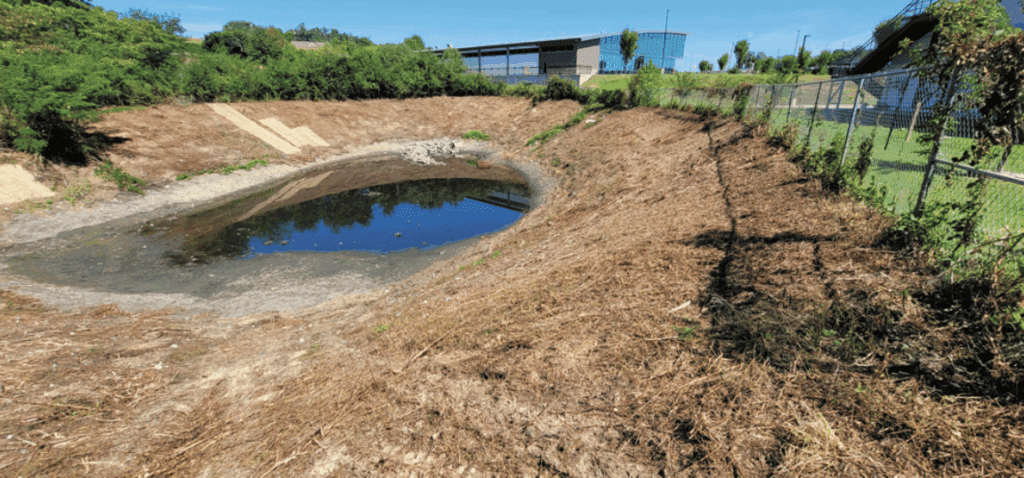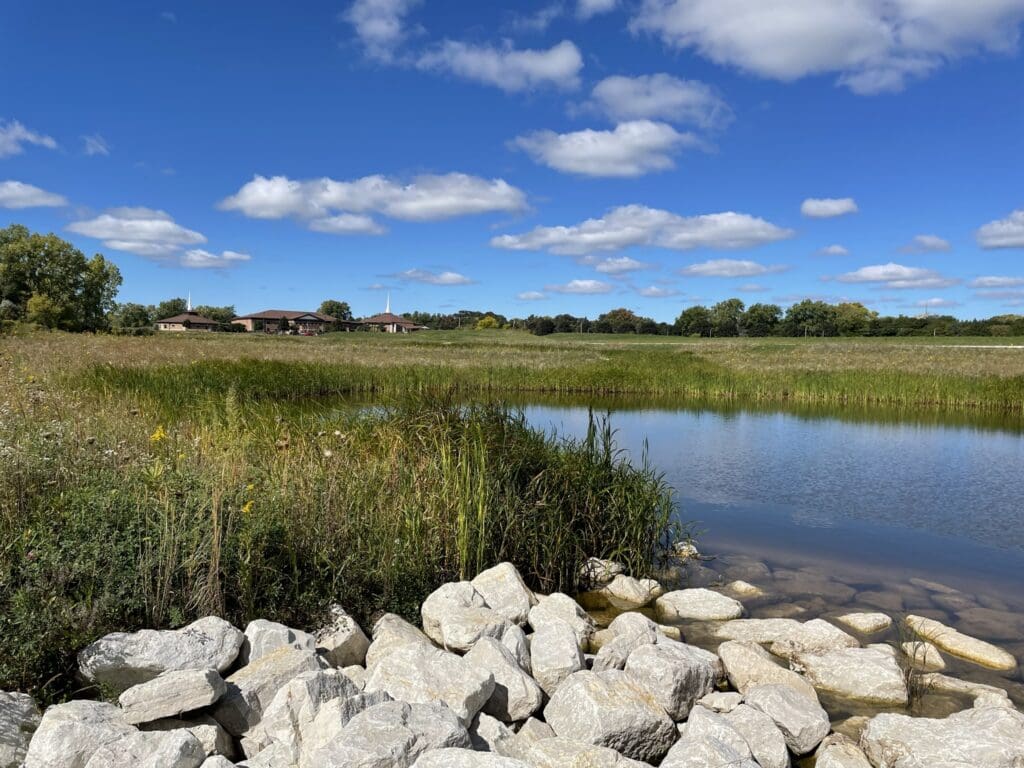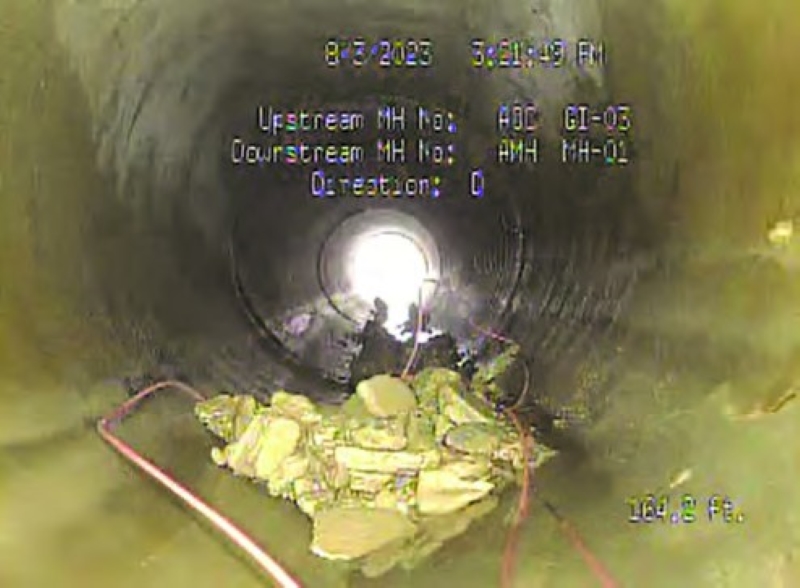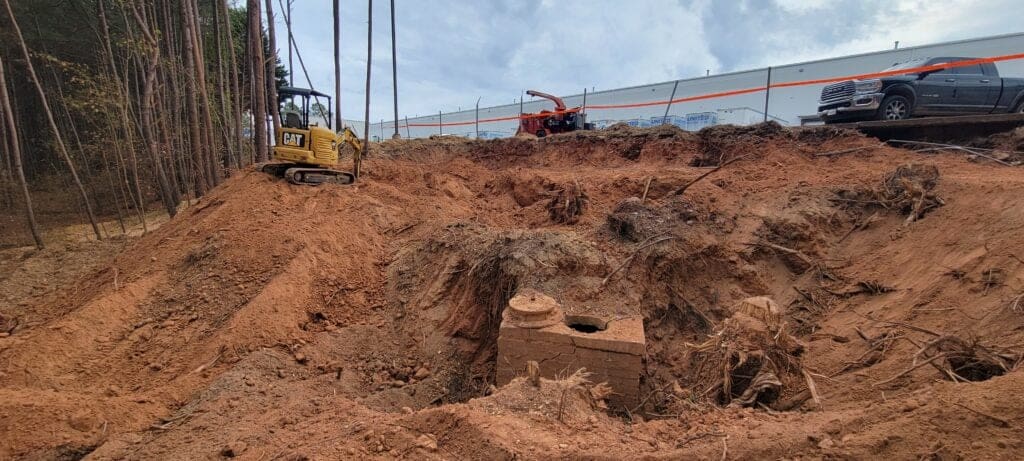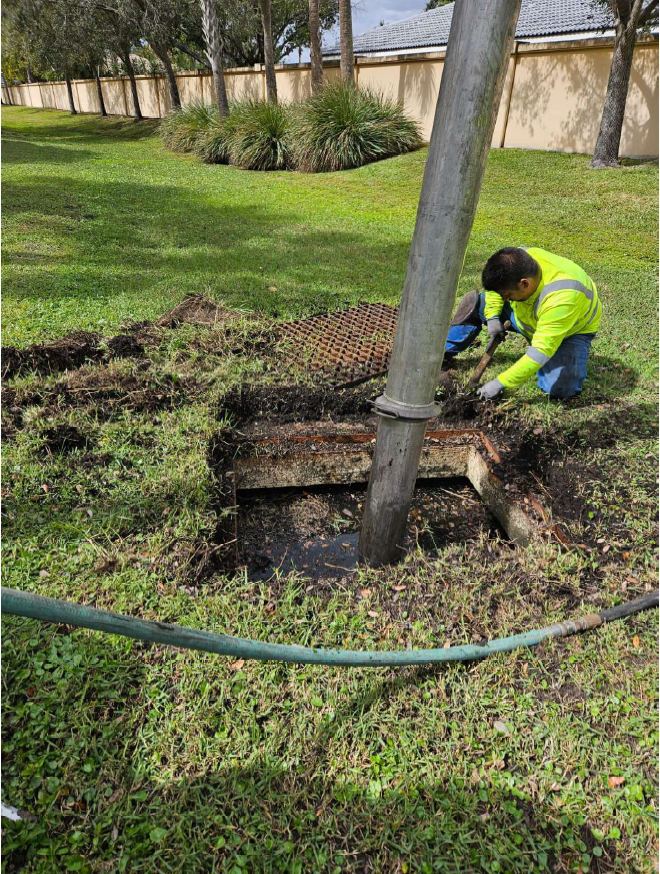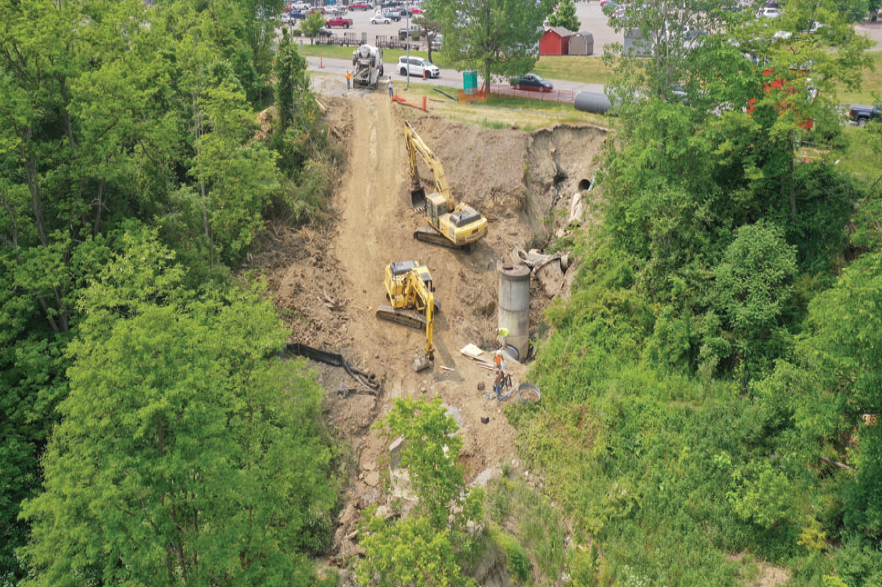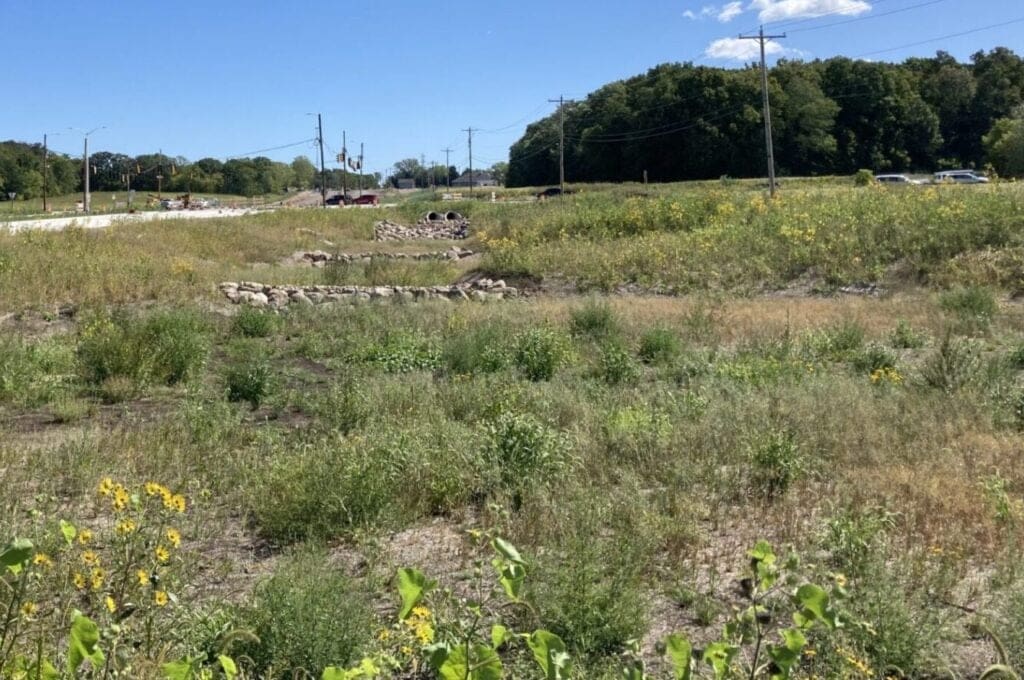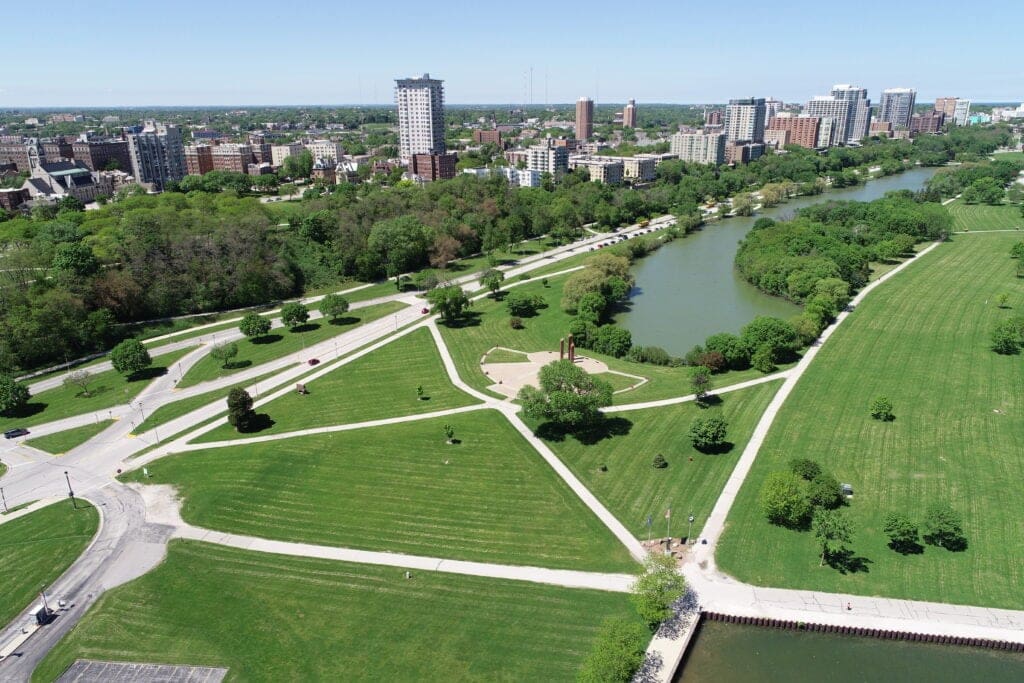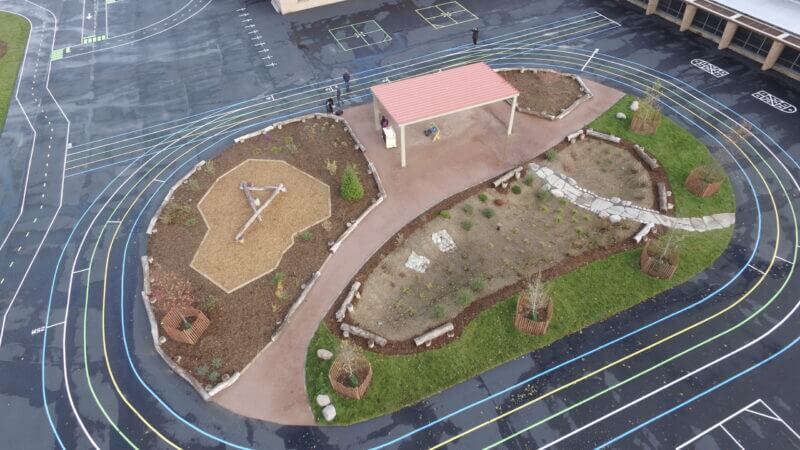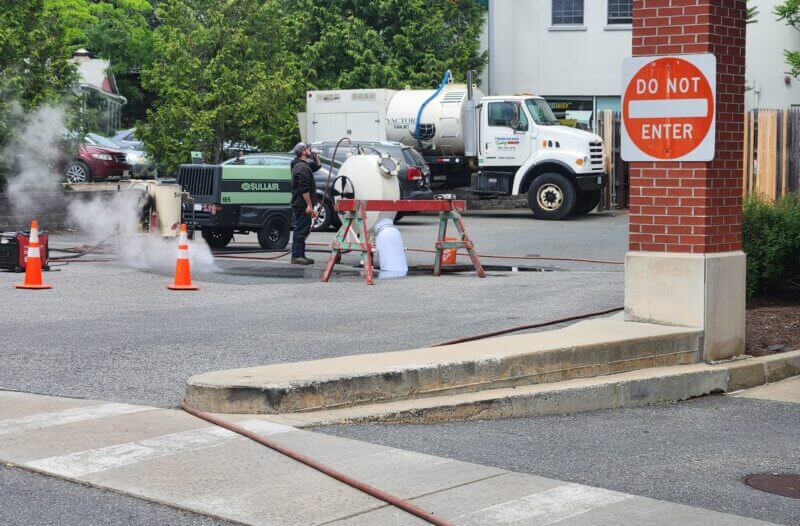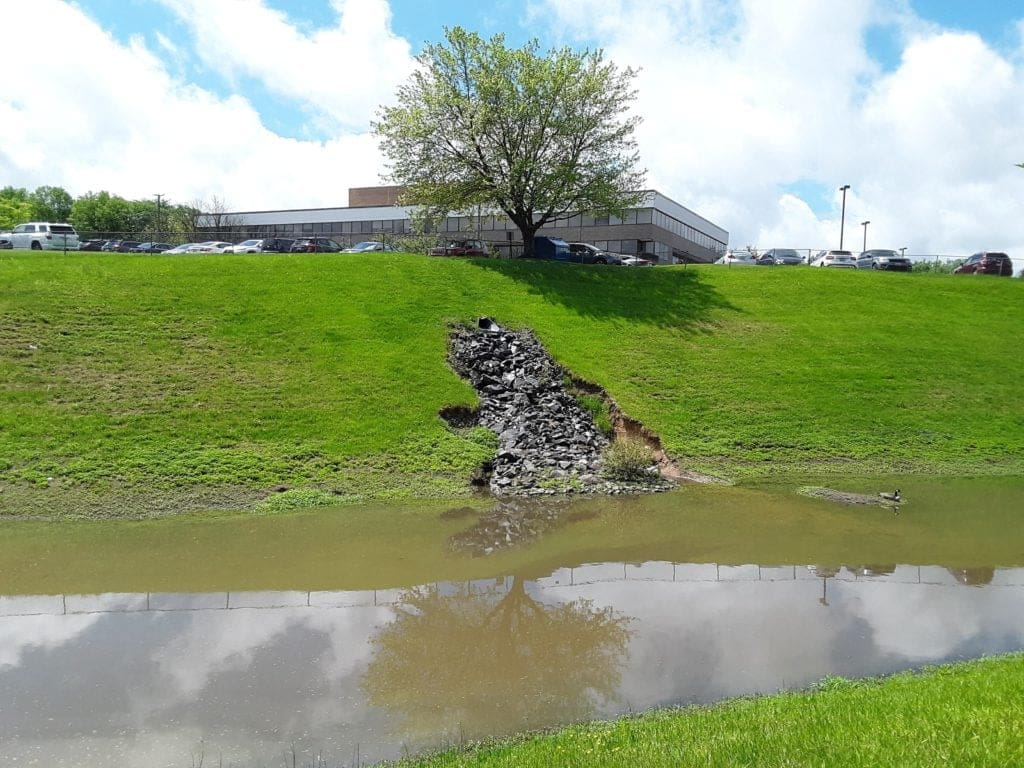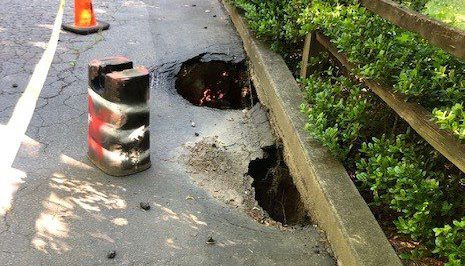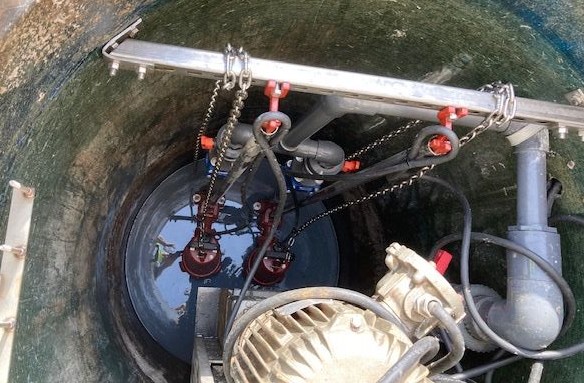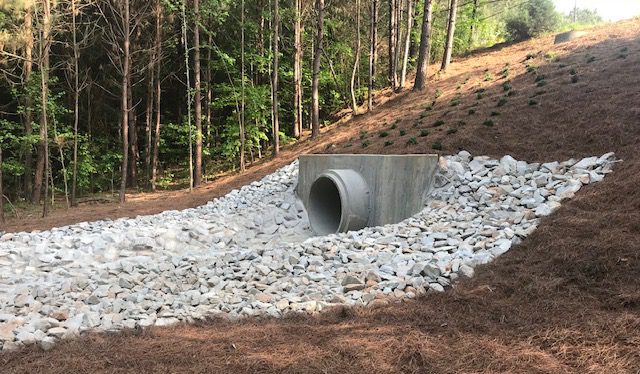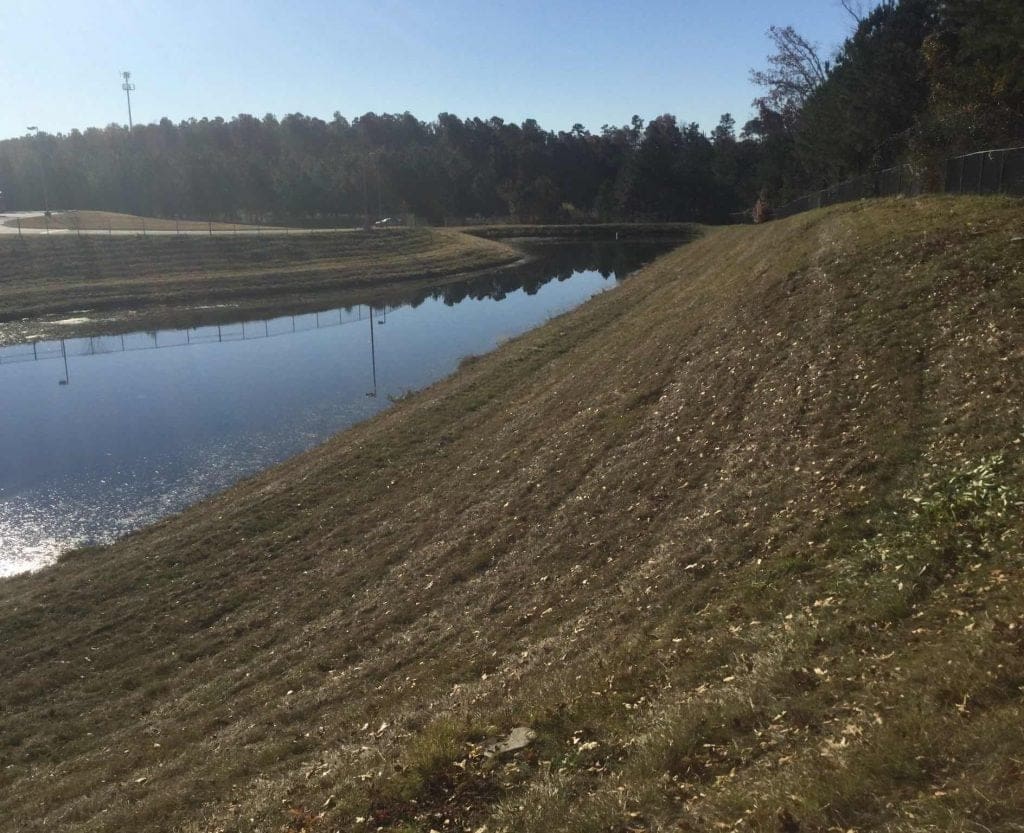Green Stormwater Infrastructure
Responsible + Reliable Water Management Solutions & Services

What is Green Stormwater Infrastructure?
Green Stormwater Infrastructure describes a type of stormwater control measure (SCM) that captures, manages and treats stormwater runoff by mimicking natural hydrologic and pollutant removal processes.
Green infrastructure can be integrated into new gray infrastructure projects or retrofitted into existing systems to manage stormwater.

Bioretention
Bioretention refers to the treatment of stormwater naturally by filtering runoff through a vegetated system, so it can infiltrate deep into the ground or discharge slowly to a drainage system. Using a nature-based solution, like a bioretention system, removes a variety of pollutants from stormwater and increases favorable groundwater recharge.
Bioretention infrastructure incorporated in small, purposeful areas.
Green areas constructed on rooftops to collect rainwater where it lands.
Planted with native vegetation, rain gardens collect runoff from nearby impervious surfaces
Stormwater control measure that mimics the natural storage and treatment of runoff that wetlands provide.
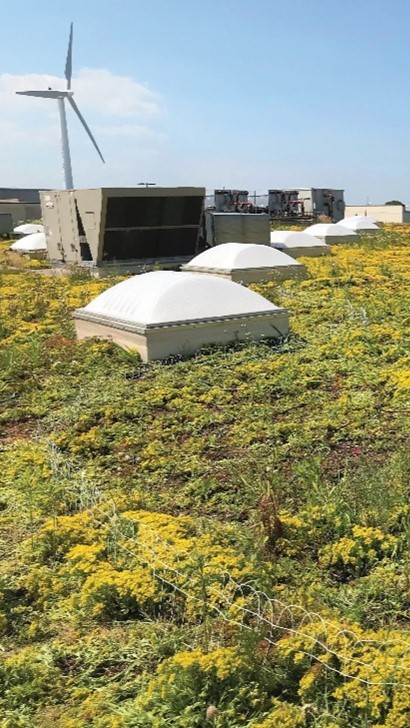
Native Landscaping
Native Landscaping refers to the design and use of plants native to the site location as a long-term sustainable solution to manage rainwater and stormwater runoff. Native plants and grasses develop a deep root system, breaking up the soil and allowing more water to infiltrate. The native vegetation is proven and often best equipped to maintain a desired longevity based on location. This infiltration and uptake of water where it lands reduces potential flooding events and simply keeps runoff out of the continued downstream drainages.
At AQUALIS we approach each site with sustainability-based solutions to plan, design and maintain native landscaping for your Green Infrastructure Plan. By understanding the existing site conditions, we can implement cost effective drainage designs with native plants that enhance the environment.

Vegetation Management
A key component to the success of any green stormwater infrastructure (GSI) or stormwater system is an established operations and maintenance (O&M) plan, and a vegetation management plan (VMP). A vegetation management plan also details the necessary maintenance for a designed vegetation plan.
As the green stormwater infrastructure experts, AQUALIS has significant experience and teaming in the design, construction, inspection, rehabilitation and long-term maintenance of GSI and stormwater systems and can provide clients with efficient and comprehensive O&M and vegetation management plans. Like traditional stormwater management systems, GSI relies on regular maintenance to function at its full potential. A detailed O&M plan and vegetation management plan ensure that anyone tasked with maintaining GSI systems are equipped with the knowledge to properly perform their job.
Soil amendments are applied to improve soil performance, increase water absorption to allow vegetation to develop a desirable deep and healthy root system, and mycorrhizal network development (fungi to plant root communication).
Operations & Maintenance
An operations and maintenance plan details the necessary training, management, budgeting and maintenance requirements to successfully operate GSI and stormwater systems

Stormwater Engineering
The AQUALIS Engineering Services Division team helps property owners and managers conduct annual assessments, upgrade site designs, obtain stormwater credits, rehabilitate existing infrastructure assets, communicate with regulatory drivers and oversee post-construction maintenance programs. AQUALIS provides sustainable engineering services, in states in which we are licensed, from concept through construction, working closely with our clients to identify and deliver their ideal solutions.
Our approach combines traditional “gray” infrastructure with innovative green infrastructure solutions, resulting in a comprehensive and effective sustainable management plan.
Our assessments focus on system performance, interactions with other services, alignment with overall goals, guiding effective decisions for design, maintenance and upgrades.
Sustainable Design integrates civil engineering and environmental science to implement best management practices (BMPs), such as green infrastructure, and to develop innovative solutions for environmental challenges
Our permit services cover erosion and sediment control, MS4, NPDES, stormwater management, utility and wetlands. Our engineers are well-versed in local, regional and federal regulations, ensuring your operation and project remains compliant with evolving regulatory requirements.
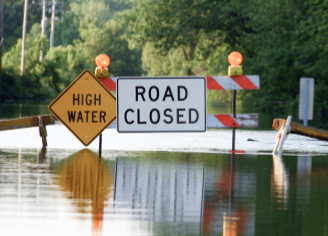

Nationwide Services
Review our locations and find your local representative with our interactive search.
Capturing Runoff with Green Stormwater Infrastructure
GSI incorporates stormwater management into multifunctional spaces, effectively mimicking natural hydrologic systems. It can capture runoff from up to 95% of rainfall events, preventing the stormwater runoff being generated from leaving the site during peak discharge times.
The construction costs of a comprehensive site using GSI are often comparable to using traditional stormwater management practices due to the multifunctional use of space. However, GSI provides higher quality stormwater management and treatment. Additionally, costs can be offset through grants.
Like all infrastructure, GSI requires specific maintenance to ensure long-term functionality and regulatory compliance. AQUALIS’s team of professionals provides clients with on-time and systematic maintenance inspections and services.
What is Green Infrastructure?
Green infrastructure is a category of stormwater control measures (SCMs) designed to capture, manage and treat stormwater runoff by mimicking natural hydrologic and pollutant removal processes. Green infrastructure enhances onsite infiltration and uses vegetation to naturally reduce volume and pollutants through evapotranspiration and biogeochemical processes. Examples of GSI include permeable pavers, bioretention, and native vegetation.
Why use Green Infrastructure?
Green infrastructure can seamlessly be integrated into multifunctional spaces, providing enhanced stormwater management and intentional site functionality, often at a comparable or even lower cost than traditional stormwater management approaches. For example, permeable pavements can replace concrete in parking areas, and native vegetation can substitute ornamental landscaping. AQUALIS specializes in both comprehensive green infrastructure design and integrated site design, delivering effective and sustainable solutions.
How is Green Infrastructure Maintained?
To ensure green infrastructure continues to perform as designed, it requires specialized maintenance that goes beyond standard landscape care. Proper green infrastructure maintenance demands a thorough understanding of its design and functionality. AQUALIS provides expert green infrastructure inspection and maintenance services to keep your green infrastructure in optimal condition.

Traditional stormwater ponds reduce TSS by 40% while the RSC designed for the parcel reduces TSS by 60%. RSC allowed the project to be more cost effective as the design was sculpted into the existing landscape rather than excavated and graded as would be necessary for a pond.
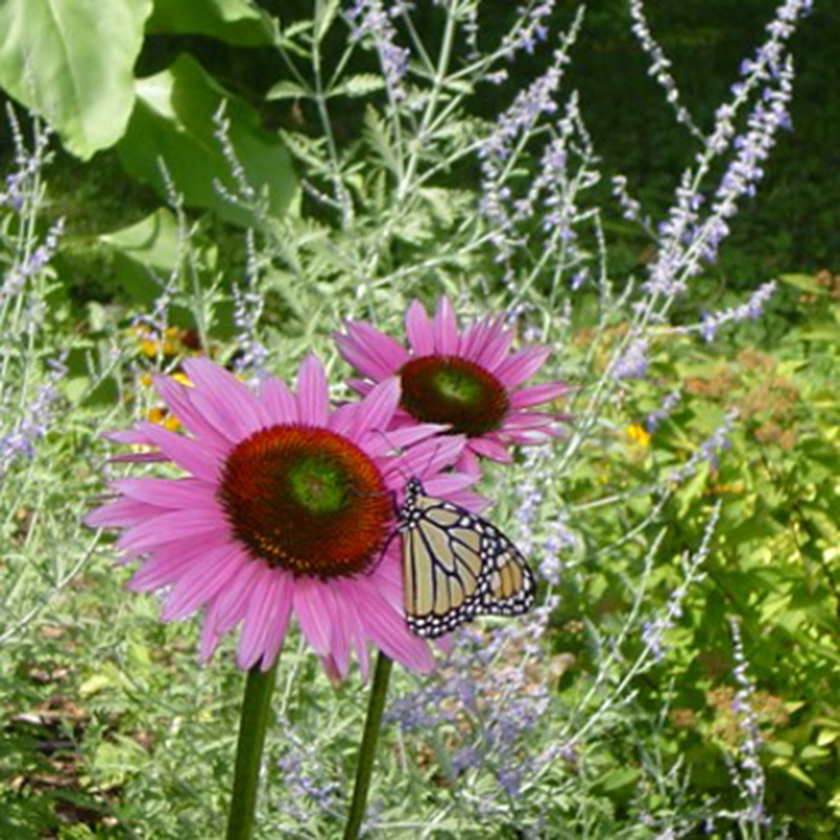
The presentation will examine several examples of GI implementation practices and the lessons learned during the planning, design and construction phases. Lessons learned across a variety of projects will be presented, and attendees will leave the session with a renewed understanding of the green infrastructure design process.
Case Studies
Did you receive an NOV? Have an urgent need? We can help.
Reach out to an AQUALIS representative today.







